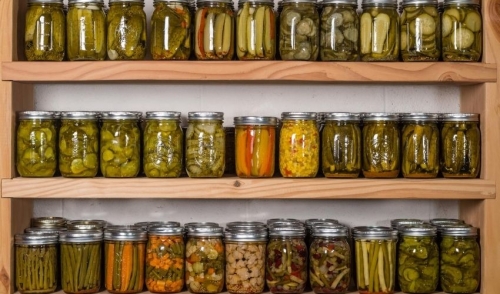
How and When to Can Summer Vegetables
A bountiful garden doesn’t have to be a source of delicious, nutritious food only while it is actively growing and ripening. If you plan how and when to can summer vegetables, you can enjoy all your produce throughout the year.
Why Bother Canning?
You don’t need a large garden or a commercial-scale operation to make the most of canning. Even if your garden just yields a few jars of your favorite veggies, canning will minimize waste and preserve your harvest, particularly when your garden may be producing more summer vegetables than you can eat right away. This will help save your grocery budget, and give you a sense of pride and self-sufficiency for storing your own food. Furthermore, because you can your vegetables yourself, you control the ingredients, including additives and preservatives. This can be very helpful for mindful eating as well as special dietary needs. Regardless of why you choose canning, however, it is critical that you know when and how to can summer vegetables properly.
When to Can Summer Vegetables
Canning is not a chore that happens only when the harvest ends. For the best results, summer vegetables should be canned at the peak of their freshness, ideally the same day as they have been picked. Young, tender vegetables will can best and preserve the best flavor, and to make the most of an extended harvest, you may be canning several times throughout the growing period.
Exactly when to can vegetables will vary based on the size of your crop, the type of veggies you are growing, when they were planted, and how your climate affects the growing season and overall ripening. Planning ahead to stagger plantings and harvest times can help you can more efficiently without being overwhelmed by a burst of ripened veggies all at once.
Vegetables to Can
All sorts of favorite garden vegetables can be canned. If you haven’t canned before, start with the veggies you like the most and will be most likely to use long after the harvest. Furthermore, be aware that canning can change the color or texture of some vegetables, which can impact which recipes they may be used with. The most popular vegetables to can include:
- Asparagus
- Beans
- Beets
- Carrots
- Corn
- Peas
- Peppers
- Potatoes
- Pumpkin
- Spinach
- Sweet potatoes
- Swiss chard
You do not need to can full batches of each type of vegetable. If you have a smaller harvest or just want to can a few vegetables, plan your canning so vegetables with the same canning procedures can be canned at the same time. Even if the jars are different sizes, you will be able to process them at the same time, cutting down on the labor of canning while you increase the food you’ve stored.
Tips for Canning Vegetables
Because vegetables are low-acid produce, it is essential that they be pressure canned to ensure food safety and eliminate all dangerous bacteria that can spoil your efforts. Before you begin, read the instructions for your canning equipment and ensure it is in safe working order, and make any necessary adjustments for high altitude or other environmental conditions. Check all jars and lids, and be sure you have all necessary ingredients available for everything you want to can.
To make the most of your canning…
- Consider asking to assist someone else first so you can learn the tricks of canning, or attend a demonstration session at a local farmer’s market or co-op.
- Use the proper tools for each step, including funnels for filling jars, jar lifters for moving jars, the proper size jars for different veggies, and the right rack in your pressure canner.
- Rinse vegetables carefully before processing, and take care not to bruise any produce. Do not can any vegetables that are already older, bruised, or otherwise damaged.
- Leave proper headspace in each jar to account for expansion as the vegetables cool. Inadequate headspace can compromise seals or cause breakage.
- After the jars have cooled, check that seals are secure. If any seals have failed, simply use those vegetables right away instead of adding them to your cupboards.
- Label jars with the name of the vegetable or recipe, as well as the date they were processed. Be sure to always use the oldest vegetables first to rotate your supply properly.
- Store canned vegetables in a cool, dry, dark place. If you have a large supply, place newer jars in difficult to reach positions to help you use up older vegetables first.
In addition to canning vegetables, try different canning recipes to make the most of your harvest. Sauces, salsas, pickles, pie fillings, and other recipes can easily be canned and will add variety to your pantry.
Canning summer vegetables is a great way to preserve your harvest, reduce your food budget, and enjoy nutritious, delicious veggies all year long. With a few simple tricks and basic know-how, your cupboards can be filled with summer deliciousness long after the growing season has ended.

